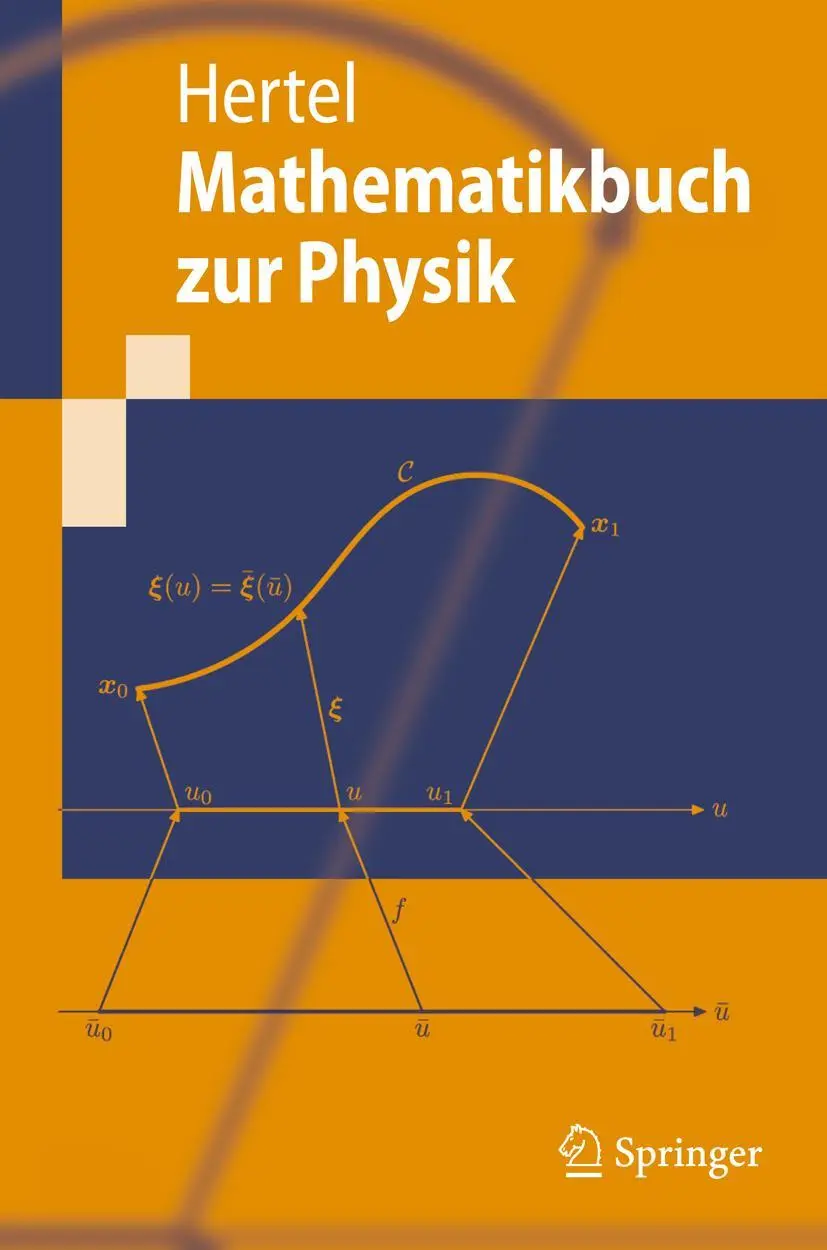Dekorationsartikel gehören nicht zum Leistungsumfang.
Sprache:
Englisch
34,95 €
UVP 37,44 €
Versandkostenfrei per Post / DHL
Lieferzeit 2-4 Werktage
Kategorien:
Beschreibung
This set of lectures provides an introduction to the structure, thermodynamics and dynamics of liquids, binary solutions and polymers at a level that will enable graduate students and non-specialist researchers to understand more specialized literature and to possibly start their own work in this field.
Part I starts with the introduction of distribution functions, which describe the statistical arrangements of atoms or molecules in a simple liquid. The main concepts involve mean field theories like the Perkus-Yevick theory and the random phase approximation, which relate the forces to the distribution functions.
In order to provide a concise, self-contained text, an understanding of the general statistical mechanics of an interacting many-body system is assumed. The fact that in a classic liquid the static and dynamic aspects of such a system can be discussed separately forms the basis of the two-fold structure of this approach.
In order to allow polymer melts and solutions to be discussed, a short chapter acquaints readers with scaling concepts by discussing random walks and fractals.
Part II of the lecture series is essentially devoted to the presentation of the dynamics of simple and complex liquids in terms of the generalized hydrodynamics concept, such as that introduced by Mori and Zwanzig. A special topic is a comprehensive introduction of the liquid-glass transition and its discussion in terms of a mode-coupling theory.
Part I starts with the introduction of distribution functions, which describe the statistical arrangements of atoms or molecules in a simple liquid. The main concepts involve mean field theories like the Perkus-Yevick theory and the random phase approximation, which relate the forces to the distribution functions.
In order to provide a concise, self-contained text, an understanding of the general statistical mechanics of an interacting many-body system is assumed. The fact that in a classic liquid the static and dynamic aspects of such a system can be discussed separately forms the basis of the two-fold structure of this approach.
In order to allow polymer melts and solutions to be discussed, a short chapter acquaints readers with scaling concepts by discussing random walks and fractals.
Part II of the lecture series is essentially devoted to the presentation of the dynamics of simple and complex liquids in terms of the generalized hydrodynamics concept, such as that introduced by Mori and Zwanzig. A special topic is a comprehensive introduction of the liquid-glass transition and its discussion in terms of a mode-coupling theory.
This set of lectures provides an introduction to the structure, thermodynamics and dynamics of liquids, binary solutions and polymers at a level that will enable graduate students and non-specialist researchers to understand more specialized literature and to possibly start their own work in this field.
Part I starts with the introduction of distribution functions, which describe the statistical arrangements of atoms or molecules in a simple liquid. The main concepts involve mean field theories like the Perkus-Yevick theory and the random phase approximation, which relate the forces to the distribution functions.
In order to provide a concise, self-contained text, an understanding of the general statistical mechanics of an interacting many-body system is assumed. The fact that in a classic liquid the static and dynamic aspects of such a system can be discussed separately forms the basis of the two-fold structure of this approach.
In order to allow polymer melts and solutions to be discussed, a short chapter acquaints readers with scaling concepts by discussing random walks and fractals.
Part II of the lecture series is essentially devoted to the presentation of the dynamics of simple and complex liquids in terms of the generalized hydrodynamics concept, such as that introduced by Mori and Zwanzig. A special topic is a comprehensive introduction of the liquid-glass transition and its discussion in terms of a mode-coupling theory.
Part I starts with the introduction of distribution functions, which describe the statistical arrangements of atoms or molecules in a simple liquid. The main concepts involve mean field theories like the Perkus-Yevick theory and the random phase approximation, which relate the forces to the distribution functions.
In order to provide a concise, self-contained text, an understanding of the general statistical mechanics of an interacting many-body system is assumed. The fact that in a classic liquid the static and dynamic aspects of such a system can be discussed separately forms the basis of the two-fold structure of this approach.
In order to allow polymer melts and solutions to be discussed, a short chapter acquaints readers with scaling concepts by discussing random walks and fractals.
Part II of the lecture series is essentially devoted to the presentation of the dynamics of simple and complex liquids in terms of the generalized hydrodynamics concept, such as that introduced by Mori and Zwanzig. A special topic is a comprehensive introduction of the liquid-glass transition and its discussion in terms of a mode-coupling theory.
Zusammenfassung
Authored by a leading researcher in the field
Course based tutorial exposition
Concise and self-contained, useful as self-study guide
Inhaltsverzeichnis
Introduction.- Part I Structure and Thermodynamics.- Structure of Liquids.- Structure and Thermodynamics of Binary Mixtures (solutions).- Random Walk and Diffusion.- Fractals.- Structure of Polymers.- Part II Dynamics.- Time-dependent Correlation and Response Functions.- Collective Excitations in Simple Liquids.- Diffusive Motion in Simple Liquids.- Polymer Dynamics.- Glass Transition and Glass Dynamics.- Conclusions: Take-home Messages.- References.
Details
| Erscheinungsjahr: | 2014 |
|---|---|
| Fachbereich: | Mechanik & Akustik |
| Genre: | Mathematik, Medizin, Naturwissenschaften, Physik, Technik |
| Rubrik: | Naturwissenschaften & Technik |
| Medium: | Taschenbuch |
| Inhalt: |
xiv
167 S. 19 s/w Illustr. 36 farbige Illustr. 167 p. 55 illus. 36 illus. in color. |
| ISBN-13: | 9783319069494 |
| ISBN-10: | 3319069497 |
| Sprache: | Englisch |
| Herstellernummer: | 86277896 |
| Einband: | Kartoniert / Broschiert |
| Autor: | Schirmacher, Walter |
| Hersteller: | Springer International Publishing |
| Verantwortliche Person für die EU: | Springer Verlag GmbH, Tiergartenstr. 17, D-69121 Heidelberg, juergen.hartmann@springer.com |
| Maße: | 235 x 155 x 11 mm |
| Von/Mit: | Walter Schirmacher |
| Erscheinungsdatum: | 01.09.2014 |
| Gewicht: | 0,289 kg |













